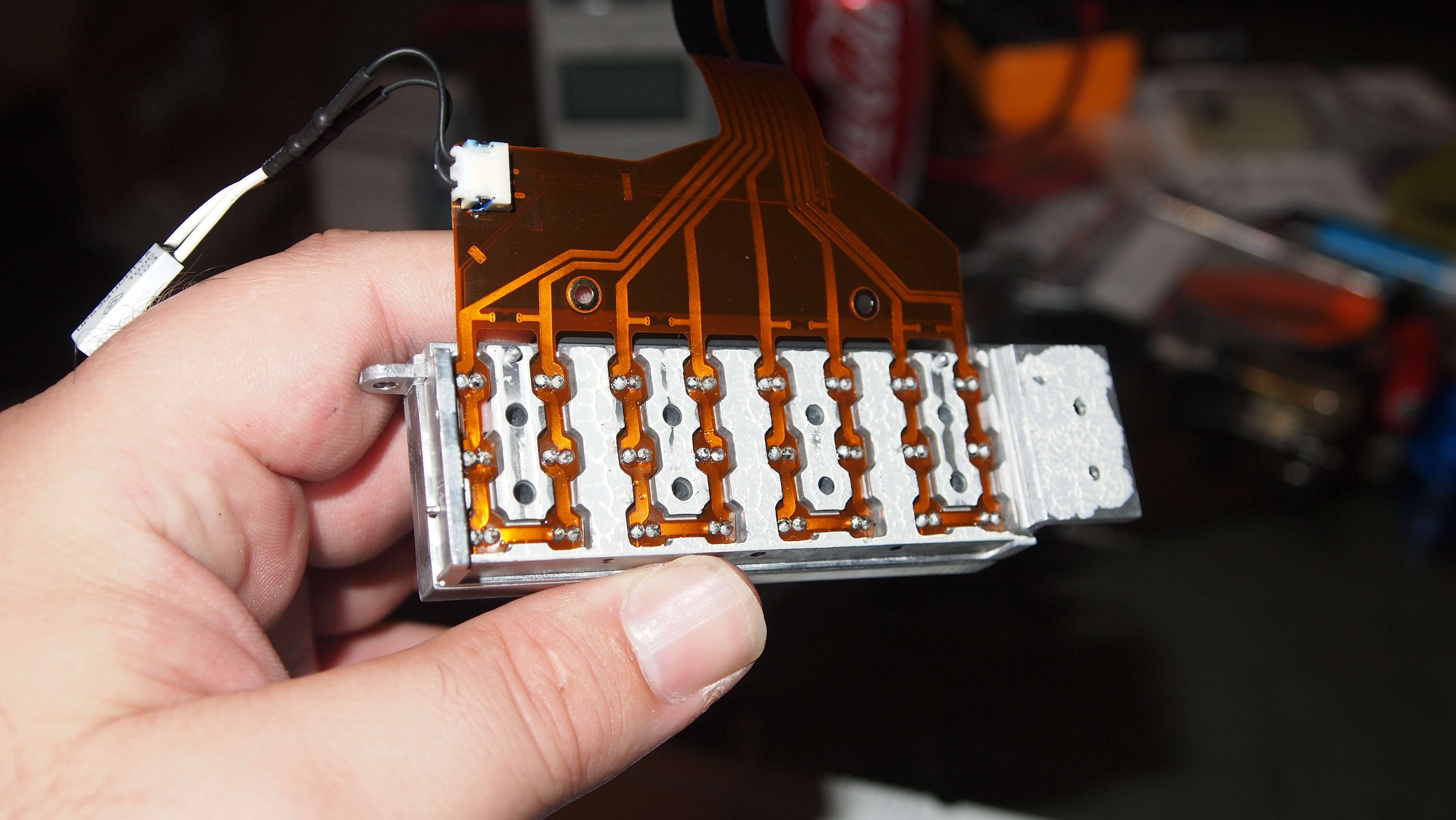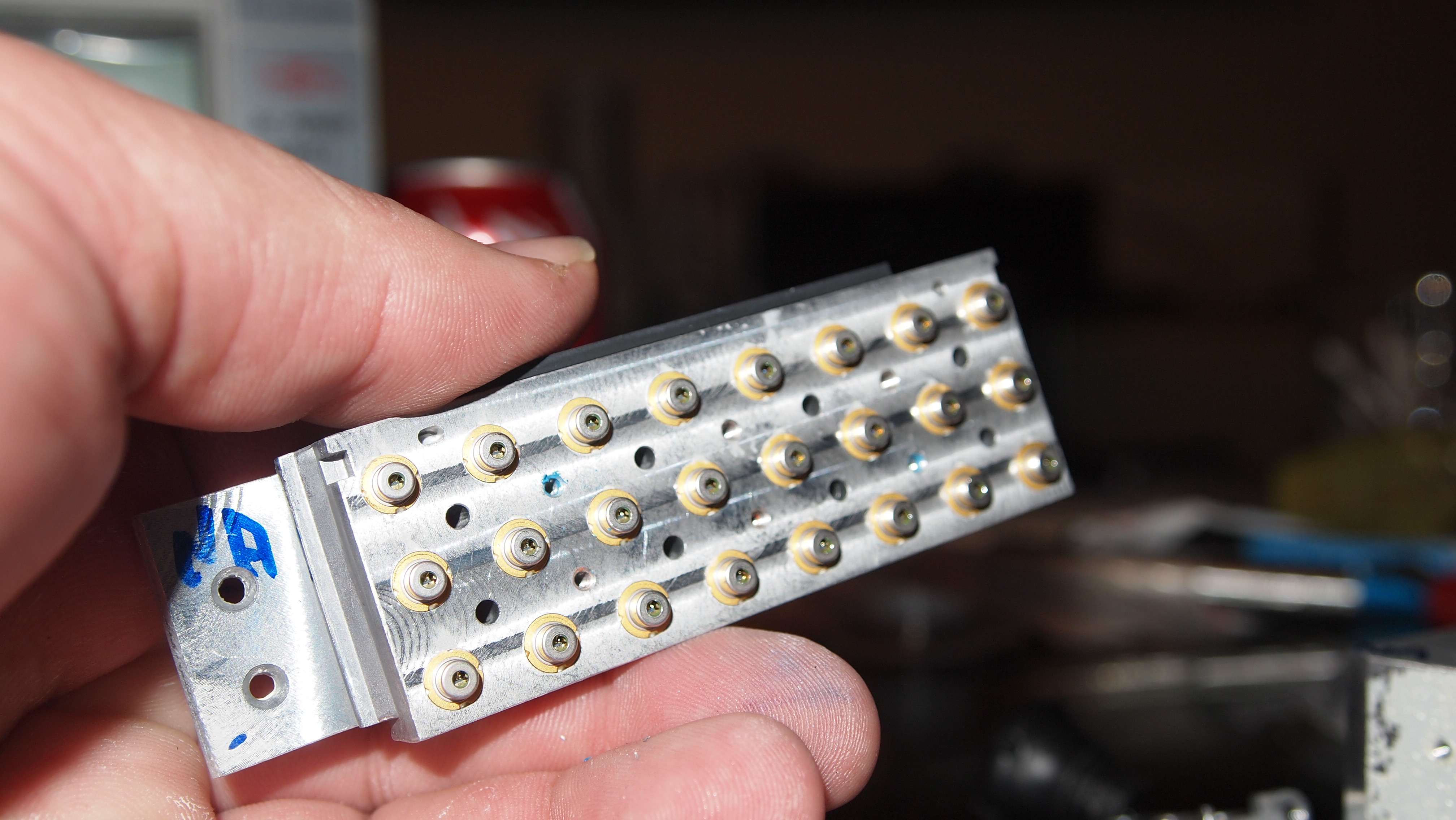Tech Junkie;
Looking at the circuit in the 1st post, I would say it is 4 strings of 6 laser diodes in series.
If one laser diode shorts, the other 5 will probably still work with constant current for the string.
Plenty of fan cooling also improves the reliability.
Regardless, these diodes have proven pretty rugged with only limited failures.
LarryDFW
One other thing to keep in mind is with the current that these LD's see,
it is more likely that diodes would fail from COD rather than the leads
to the die completely blowing out...
That in mind, as along as the LD remain in an 'LED' state, it will continue
to draw the same current and voltage, just no real output of light.
The other LD's in that 'string' would continue to see the same current.
Cant remember if these are series or parallel, but if series, the 'string'
would go out if one failed, and only if the lead on the die 'popped'.
IIRC these are in parallel..
The LD's ive blown were all around 2A or just a hair above. In my case,
there was no 'LED' output, just an open circuit with blown out leads.







